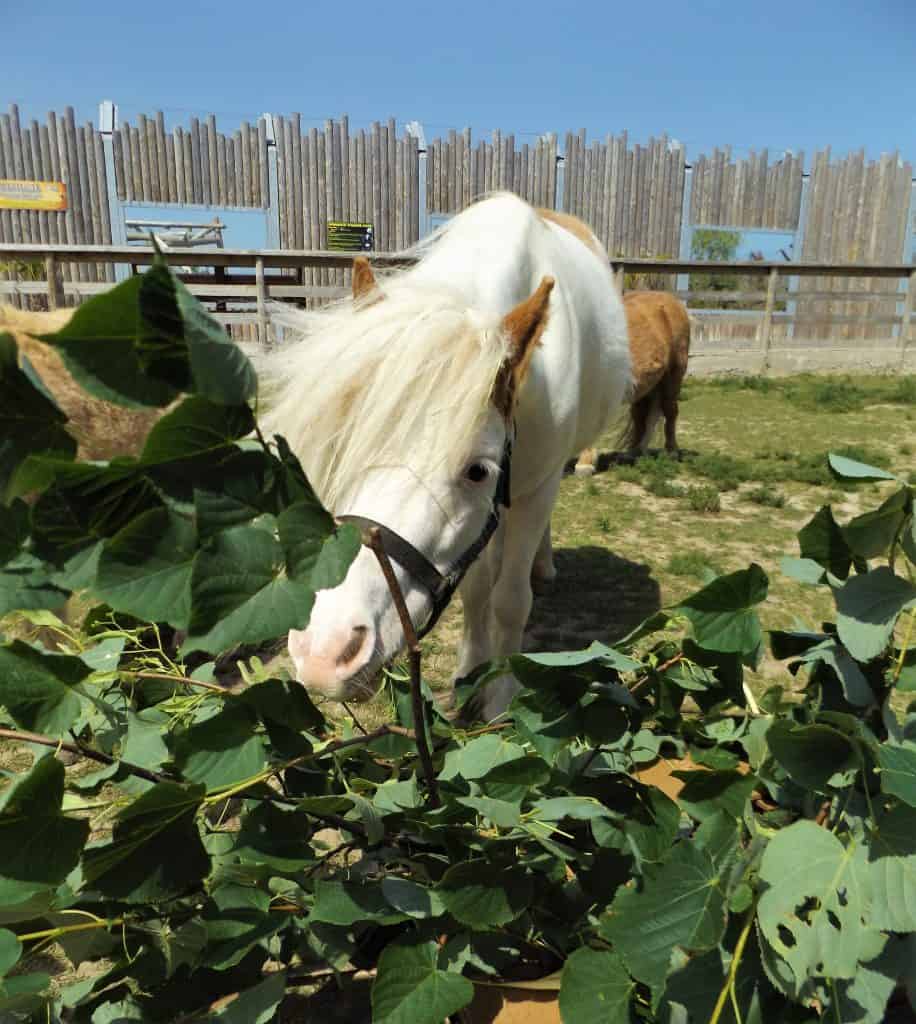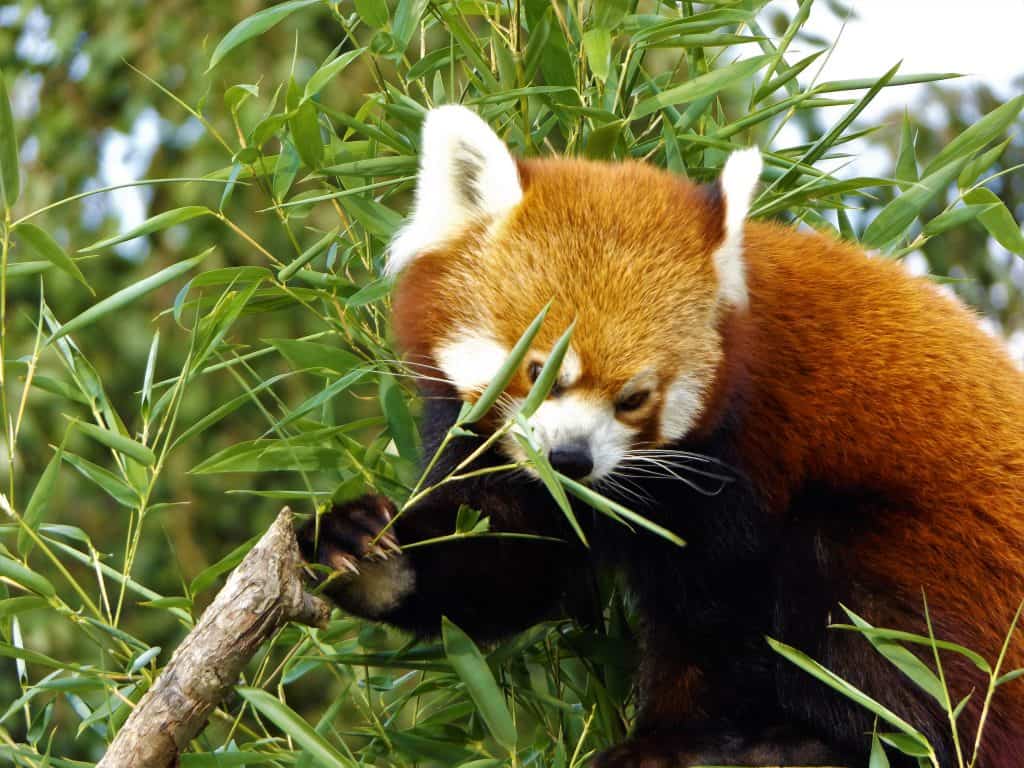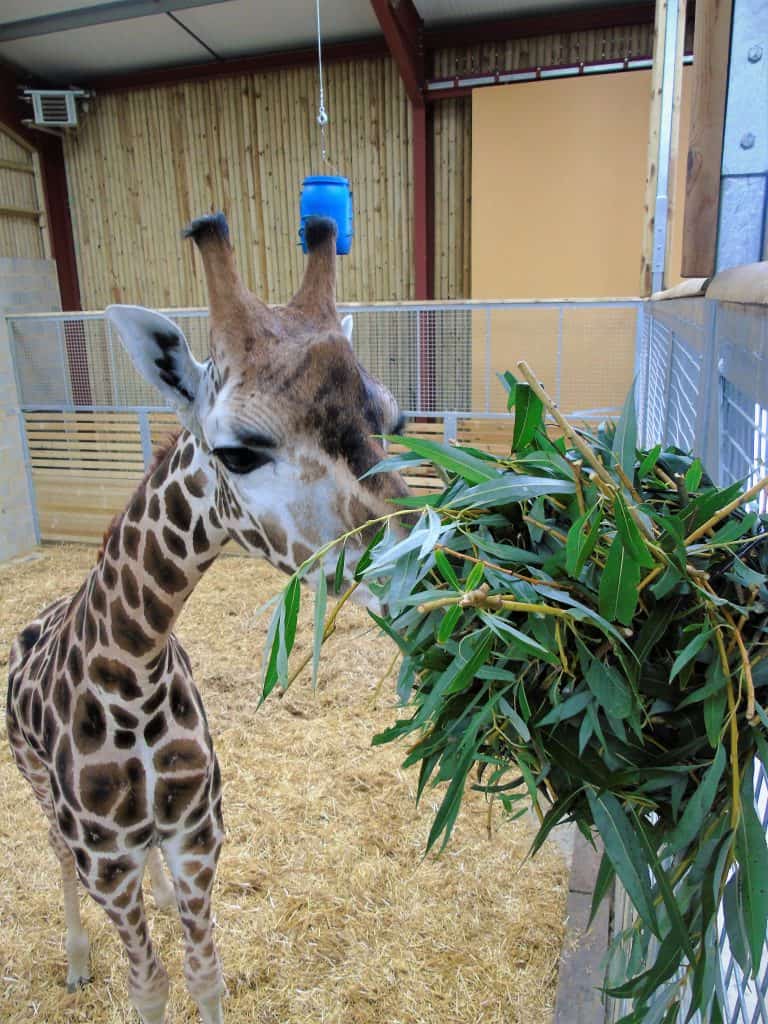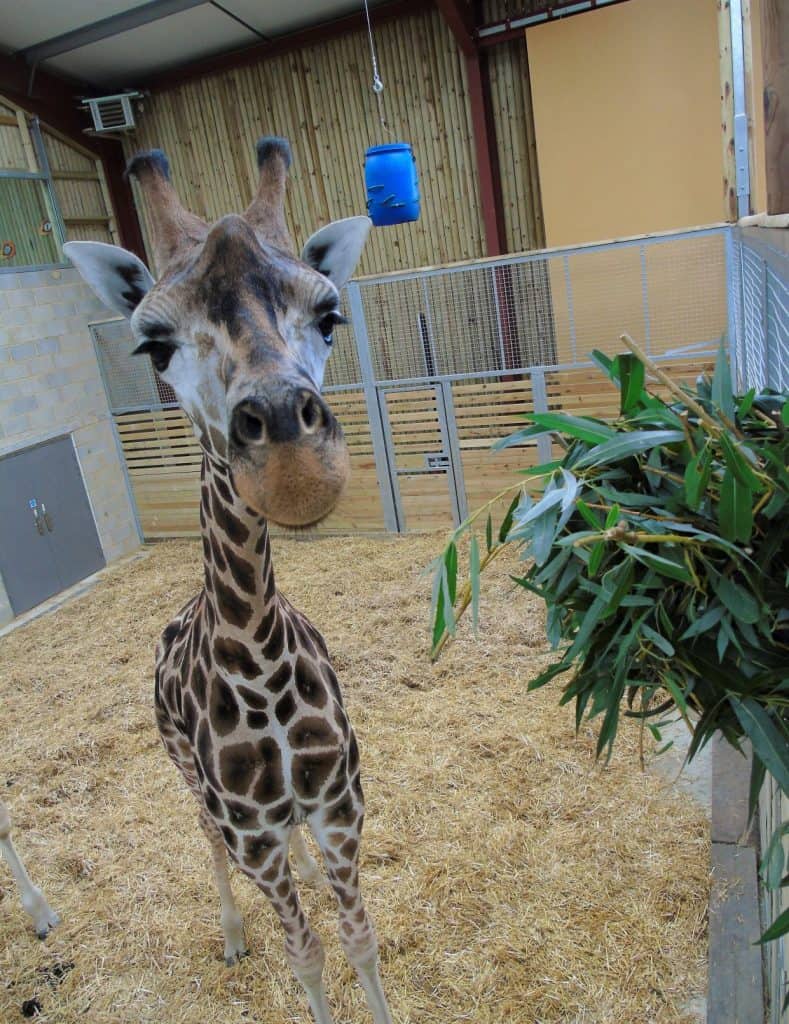Happy New Year to you all!
My blog this week is going to be about feeding out browse (leaves) and how certain animals that are found on the mammal section love to it eat. Sometimes they even prefer it to the vegetable and pellets that they usually scoff down.

We feed browse to the Giraffes, Tapirs, Porcupines, Pigs, Wallabies, Goats, Deer, Horses, Rabbits, Guinea Pigs, Egyptian Fruitbats and Red Pandas (in the form of bamboo). As you can see there’s quite a variety in the size of animals so they all eat very different amounts.

The species that eats the most amount of browse by a country mile if you hadn’t already guessed it is…….. the Giraffes. They LOVE to eat leaves and lots of them. In the wild they can be seen eating up to 45 kilograms of vegetation every day as they stretch their long necks to reach the leaves of the acacia trees. Their digestive system is specifically designed to digest large quantities of browse, but what does a giraffe do in a zoo environment where there are no acacia trees and no leaves on the domestic trees for half of the year?


Well, since giraffes in the wild primarily eat leaves, in captivity it is recommended to feed them as much browse as possible. However this is easier said than done. In practice it’s very difficult and near on impossible to get the quantities of fresh leafy browse that is needed for a group of giraffes, especially during wintertime so a lot of planning and preparing is needed.
I’m sure on all the walks you are doing at the moment or even as you look out of your windows at home, you’ll be able to see the trees have lost their leaves. This is a very natural behaviour for trees but not good from my point of view as my animals love their browse. Animals diets will be changed according to the different seasons, increased/decreased where needed with their alfalfa, hay, pellets, fruit and vegetables.
Silage
About 3 years ago now we started doing browse silage for the animals. Silage is a process of fermenting high-moisture stored fodder which can be fed to ruminants, in our case at Wingham we use the trees that are grown on the grounds. Species include Willow, Limes, Horse and Sweet Chestnut, London Plane, Italian and European Alder, Buddleia, Hawthorn, Hazel, Ash, Hornbeam, Beech, Poplar, Elm, Birch and Maple.
While silaging is a time consuming process, it is extremely important to our animal care program. The process runs from May to July when the tree leaves are highly nutritious and before their chemical properties start changing to get the trees ready for cooler weather. We sustainably trim branches from species of trees that have been approved as safe and non-toxic.
The process starts out as a mountain of tree branches that need to be hand cut into large animal bite sized pieces and then distributed into 30 gallon barrels. Only the leaves and pencil thin branches are silaged.
The tree material is stamped down to eliminate as much air as possible and sealed, then the barrels are stored for 4-6 months with us opening the first barrels in January. Once opened, each barrel is inspected and approved for consumption before the contents are fed to any animal.
This process is very time consuming but allows us to have properly processed browse material for our herbivores even in the cold winter months. As mentioned earlier so many of our animals benefit from us doing silage. Even other sections like primates will use this method too, so the pros definitely outweigh the cons.
Now you know what us keepers are doing when you see us underneath the trees in the park as we put the leaves into our blue barrels. If you haven’t spotted us doing this in the past, keep an eye out for it on your future visits.


